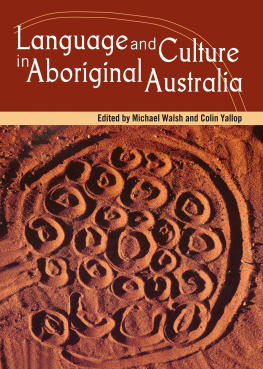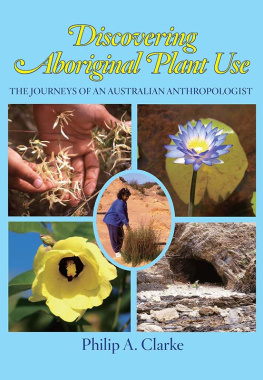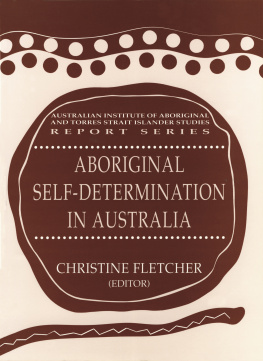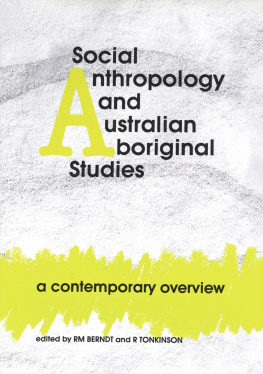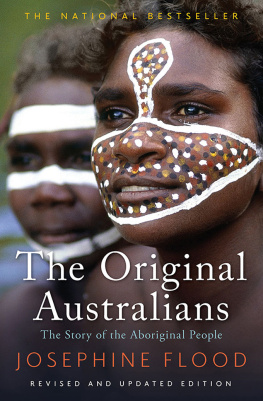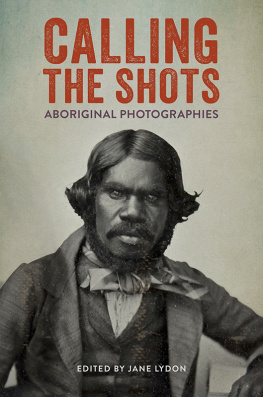Head (2000a, chapter 4), MacKenzie (1997) and Thomas (1983, pp. 1725).
Brown (1986), Duranti (2001), Foley (1997) and Lakoff (1987).
Berlin (1992), Brown (1986), Crawford (1982, pp. 167), Heath (1978), Kean (1991), Laramba Community Women (2003, pp. viiix), McKnight (1999), Smith & Kalotas (1985, p. 326), Waddy (1979, 1982, 1988) and Walsh (1993).
Blake (1981), Henderson & Nash (2002), Schmidt (1993), Thieberger & McGregor (1994) and Yallop (1982).
Clarke (2003a, pp. 198200, 2045, 218; 2006 ms) and Finlayson (1952, pp. 578, 71).
Stirling (1896, p. 37). Reference cited by Stirling is Schulze (1891, p. 216).
Mhlhusler (2003, pp. 50, 612).
Robinson (2 July 1831 [cited Plomley, 1966, p. 369]). Also see Plomley & Cameron (1993, pp. 57, 15, 20, 23) and Robinson (182931 [cited Plomley, 1966, pp. 61, 139, 190, 369, 386, 490, 4923, 601]).
McKnight (1999, p. 136).
Latz (1995, pp. 756). See also Crawford (1982, pp. 167) and Nash (1997).
Mhlhusler (2003), Povinelli (1990) and Waddy (1982, 1988).
Wiminydji & Peile (1978, p. 506).
Goddard & Kalotas (1988, pp. 145), Johnston & Cleland (1942, pp. 95, 102), Thomson (1962, pp. 2723), Tindale (1978, pp. 1602) and Wilhelmi (1861, p. 172).
Henderson & Dobson (1994, pp. 445, 476, 495, 558) and Turner (1994, p. viii). Schulze (1891, pp. 2314) identified the same food categories, but used the spellings garra ( kere ), ntjaba ( tyape ), mana ( merne ) and unkuala ( ngkwarle ).
For instance, refer to Akerman (1978), Davis (1989, pp. 345), Heath (1978, pp. 44), Mathews (1904, pp. 227, 237), OConnell et al. (1983, p. 83), Sutton (1995, p. 154) and Wilhelmi (1861, p. 172).
McKnight (1999, pp. 13640).
Memmott et al. (2006, p. 31).
McKnight (1999, p. 125).
Rudder (197879, p. 353).
Clarke (2003a, pp. 34, 186), Russell-Smith (1985, pp. 2445), Warner (1958, pp. 1356) and Yunupingu (1995, p. 12). Mathews (1904, pp. 2945) recorded a similar system, Which divided plant species into moieties (phratries), from Western Victoria.
Smith (1991, p. 27) and Smith et al. (1993, p. 24).
Goddard (1992, pp. 21, 99, 176) and Goddard & Kalotas (1988, pp. 1169).
Heath (1978, pp. 523). See also Levitt (1981, pp. 1112) and Wightman, Roberts et al. (1992, p. 36).
Warner (1958, pp. 2789). Refer to Capell (1962), Mathews (1903) and OGrady (1956) for descriptions of Aboriginal secret languages.
Mhlhusler & Fill (2001) and Mhlhusler (2003) provided overviews of the study of language and environment.
Heath (1978, p. 46).
A.R. Peile (1980 [cited Carr & Carr, 1981, p. 8]). In the quote, Calytrix microphylla is an earlier name for C. exstipulata.
Cleland & Johnston (193738, pp. 2089, 211, 213), Goddard (1992, p. 125) and Goddard & Kalotas (1988, p. 15). See also Cleland (1936, p. 8) and Johnston & Cleland (1942, p. 95) for related categories.
Meyer (1843, p. 70).
Yunupingu (1995, p. 49) and Yunupingu & Williams (1995, p. vi). The species of bush potato here refers to Ipomoea graminea .
Levitt (1981, pp. 32, 39, 145). See also Smith & Kalotas (1985, p. 337) and Specht (1958, pp. 483, 501). The name is sometimes Written as Triglochin procera .
Latz (1995, pp. 2967). See also Bindon & Gough (1993, p. 14), Cleland (1957, pp. 152, 155), Cleland et al. (1925, p. 115), Cleland & Johnston (1933, p. 121), Cleland & Tindale (1954, p. 84; 1959, p. 135), Hiddins (2001, p. 135), Latz (1995, pp. 2967), OConnell et al. (1983, pp. 846), Roth (1897, pp. 923), Turner (1994, p. 21), Wightman, Dixon et al. (1992, p. 33) and Wightman, Gurindji elders et al. (1994, p. 53).
Willie MacKenzie (Winterbotham, cited Symons & Symons, 1994, p. 16).
Berndt (1940, p. 173), Berndt & Berndt (1993, pp. 124, 237, 4523) and South Australian Department of Education, Training and Employment (2001, pp. 203). During the 1980s, I also received several related accounts from Ngarrindjeri people.
Johnston & Cleland (1942, p. 97).
Goddard (1992, p. 60).
Common name derivation discussed by Ramson (1988, p. 646).
Bunce (1859, p. 71; see also p. 74).
Frankel (1982), Gott (1983), Gott & Conran (1991, pp. 67), Low (1989, pp. 104, 108) and Zola & Gott (1992, pp. 79).
Dawson (1881, pp. 101, xxxiii).
Tunbridge (1985b, p. 3; 1987, p. 4).
Hercus & Simpson (2002, p. 16).
Dawson (1881, p. lxxix).
Dawson (1881, p. lxxx). Identification by Gott (1985a, p. 14).
Dawson (1881, p. lxxxi). Recorded Words for pigface include puuyuupkil in Gundidjmara around Portland in Western Victoria (Zola & Gott, 1992, p. 20), booyeup in the Lake Boga language of central Victoria (Stone, 1911, p. 444), buyub in the Djadjala dialect of Wergaia language in northwest Victoria (Hercus, 1986, p. 275) and poo-yup in southeast South Australia (Cameron-Bonney, 1990, p. 21).
Dawson (1881, p. lxxxi). Gott (1985a, p. 14) Was not able to identify this plant. This name appears related to the Aboriginal Words recorded from the Adelaide region, parnguttanative root; potatoe (Teichelmann & Schrmann, 1840, pt.2, p. 37), parangota potato (Wyatt, 1879, p. 174) and pernuta potato (Williams, 1839, p. 64).






